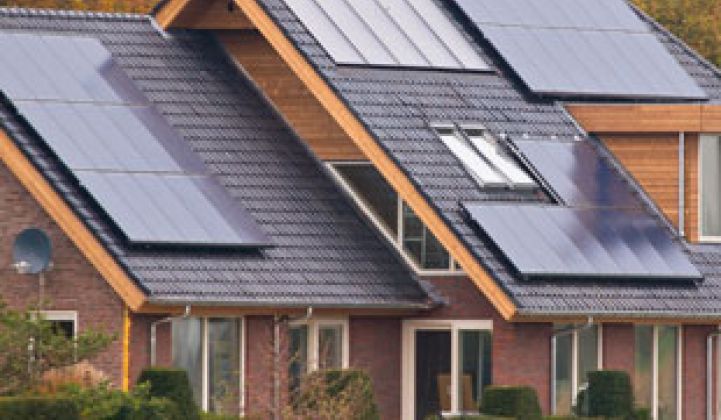Rocky Mountain Institute, the renewable energy and sustainability think tank, raised a bit of a furor back in February with the release of its The Economics of Grid Defection report. In simple terms, the study from RMI, HOMER Energy and CohnReznick Think Energy described how distributed solar PV, along with ever-cheaper batteries to store that energy, is achieving economic parity with grid power in markets like Hawaii and parts of California, and is set to break that barrier in many more markets in the next decade.
That could give utility customers the incentive to “defect” from the grid -- but it doesn’t mean they should do so, as RMI and its partners have been saying ever since the report came out. Instead, it’s an invitation for utilities, customers and regulators to get together and find ways to share the value of that ever-cheaper distributed energy resource, rather than fight over it.
James Mandel, a manager with RMI’s electricity and industrial practices and co-author of the grid defection report, was at last week’s Grid Edge Live conference in San Diego to talk about future grid regulatory and business models. He also sat down with me to discuss early details on the next installation of RMI’s solar-storage research, due out later this year.
In particular, Mandel focused on the key concept of the difference in economic value between an off-grid solar-battery system and one that’s connected to the grid. While most early solar systems relied on batteries, the vast majority of newly built PV needs the grid to sell power back to under net metering or feed-in tariff mechanisms.
That trend has allowed grid parity for solar to arrive more than a decade earlier than would have been the case for off-grid systems, he noted. And that, in turn, represents the value that solar-plus-battery-equipped customers are receiving from the grid, and thus the utility.
So far, utilities have mostly tried to seize that value in the form of minimum bills or fixed charges for customers. After all, they argue, most of the grid’s costs are fixed, so customers should share in that burden. But Mandel warned that such approaches not only seem inherently unfair to customers, but they also add costs that make grid power even less attractive in comparison to the solar-storage alternative.
A better approach would find ways to create new regulatory structures to permit costs and values to be realized at the distributed scale, he suggested. One potential example is the process that New York state has kicked off to revamp its regulatory structure, although “some of the danger there is around the ability to make [solar] investments on a twenty-year time horizon” which may be threatened if stable power purchase agreements and net metering contracts are replaced by market forces.
Mandel reiterated that RMI’s work isn’t aimed at predicting if or when customers will start to dissolve their ties with their local utility. Instead, it’s meant to provide a framework for predicting when that option will become cost-effective from the point of view of consumers.
But economics don’t entirely dictate how individuals behave, he added. For example, the handful of companies like SolarCity that are offering homeowners batteries for use with their solar panels aren’t able to justify the costs solely on the basis of the value of emergency backup they provide. Instead, those customers are seeking security, independence, or some other value that doesn’t convert smoothly into dollars and cents.
The core lesson, Mandel said, is that “consumers are going to do what they want -- and they’re not going to do what you want, unless they’re being incentivized economically. What’s really important is that you acknowledge that the customer has choice, and set up systems to allow them to participate in the market and get paid for them.”
RMI is working with a few utilities that are exploring options on this front, he said. One concept RMI is exploring is a “hot spot manager,” or technology that can detect and predict where rising solar PV penetration will start to create problems on certain portions of the grid.
“If you know where a distributed investment will help your capex, you really want to see solar installed there. Whether you install it yourself, whether you streamline permitting,” or find other ways to drive solar to the spots most beneficial to the grid, there should be ways to share the benefits with the customers -- particularly if installing the solar and batteries is less expensive than the other alternatives, he noted.
That’s the kind of analysis that utilities in states like California and Hawaii are undertaking to grasp the complexities of their distributed-resource-rich grids, and that many others are testing with government and corporate research partners. But in a truly distributed grid future, it’s going to be the rule, not the exception, for how utilities manage their assets and their customers.



